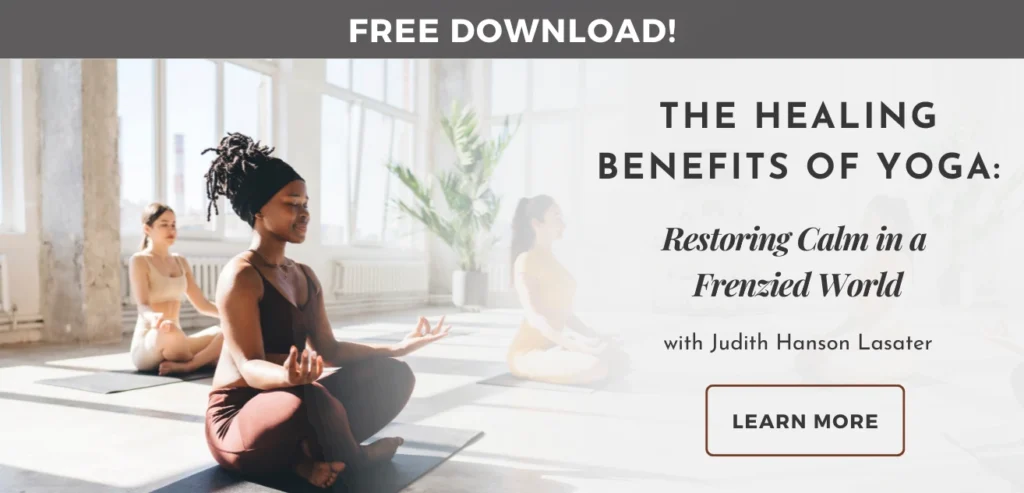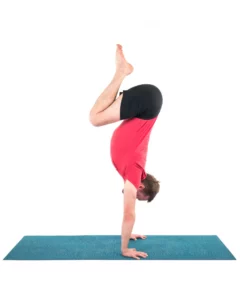8 Ways to Enjoy Spending Time in Nature

Yoga and Ayurveda teach that well-being is the balanced and dynamic integration of our environment, body, mind, and spirit. Spending time in nature is essential for optimal health, especially now, as we contend with our ever-shifting circumstances.
When this balance is missing for too long, we will eventually feel it. It may feel like boredom, emptiness, or possibly a deep craving or hunger. Or maybe it manifests as irritability, sadness, anger, or, eventually, illness.
Of course, there are many practices we can do on our mats to help us balance and harmonize in this way, but we exponentially deepen our experience when we get off our mats and out into the world.
Science supports the importance of spending time in nature for our wellbeing. A growing body of research confirms that more time in nature will improve overall health, including reducing the stress hormone cortisol. Reducing stress increases our bodies’ defense system, promotes faster healing time, and reduces symptoms of anxiety and depression.
In fact, in Japan, forest bathing has become a recommended prescription to decrease stress, increase immunity, and help alleviate chronic illness symptoms.
8 Easy Ways to Enjoy Spending Time in Nature
Summer is the perfect time to expand in this way. I’ve packed this blog post with inspiration and suggestions on getting outside a little more, ideas on connecting more deeply with friends and loved ones in nature, and techniques for incorporating yoga and mindfulness practices into any summer activity.
-
Dine Outside
You don’t have to pack a woven basket and go on a big picnic (although that would be great!). My family eats breakfast outside in our backyard, even on busy mornings. If we bring our food outside for just a few minutes, it can change the way we feel all day. Try it! Or take your next lunch out and enjoy your meal on a bench with a friend.
-
Spend an Hour at a Farmers’ Market

Time in the market can feel like a day in nature. Just feasting your eyes on all the colors and smelling all the earth-grown goodies is refreshing for the senses.
-
Forage in Your Yard!
A farmer at the market once introduced us to Purslane. It’s a very watery, sweet, and delicious weed—and it grows in many of our yards! Here is a list of edible weeds you can dig up in your own yard.
-
You Don’t Have to Dig Too Deep
Do you have a small yard or live in an apartment? Plant some flowers or herbs in a pot. Use your hands to dig the dirt. Take a deep breath and enjoy the scent on your hands.
-
Ride the Water

Live in the city? Take a ferry ride instead of the subway or a cab. When living in Hoboken, we often rode the ferry back and forth to NYC for fun. For a special treat, try an early-morning ride before the world is too awake, or enjoy a sunset trip. Just sit back, relax, and let the wind blow in your hair.
-
Look Up
Grab a friend and lie down in the grass, look up at the sky, and describe the cloud formations you see. Are there any animals up there? Are there any cartoon characters? Tell a story with the characters you see in the sky. If you can’t get outside, remember that even just looking out a window at the sky can be a way to connect with nature.

-
Listen In
Stand still in the park or the woods. Relax and listen. What do you hear? This is a great one to do with children. After several minutes of listening, share with each other the most interesting sound you heard.
-
Take Your Practice Into Nature with a Walking Meditation
Walking meditation is easy, takes little time, requires no formal training, and offers amazing health benefits. It is particularly valued for its ability to refresh your mind, boost your emotions, and help you feel more in sync with nature’s cycles. What I like most about walking meditation is it helps me see things anew. There is really no right or wrong when it comes to walking meditation. And you don’t have to walk so slowly that people will wonder what you are doing. Just walk slowly enough that you can be fully present with your breath, your steps, and the nature around you.
To practice walking meditation, simply pay attention to the sensations in your feet and legs with each step. When you walk in nature, it’s also nice to pay attention to hearing and seeing and whatever sensations you’re feeling—such as the sun or a breeze on your skin.
When we slow down enough, any moment can be a potential to wake up, shift our perspective, and connect more.

Also, read...
Yoga to Soothe Mind and Body: How to Practice Supported Pigeon Pose
Study: Yoga Can Help Foster Greater Mind-Body Integration – The Four Stages of Body Awareness
What Your Body Tells You Can Protect You From Stress, Study Suggests
Related courses

Jillian Pransky, author of Deep Listening, is a certified Yoga Therapist recognized by the International Association of Yoga Therapy. She leads The Art of Conscious Rest: Restorative Teacher Training Online and is a featured teacher at respected holistic learning centers internationally, including Esalen, Kripalu Center for Yoga and Health, and Omega Institute.
Learn more about her work at jillianpransky.com.



